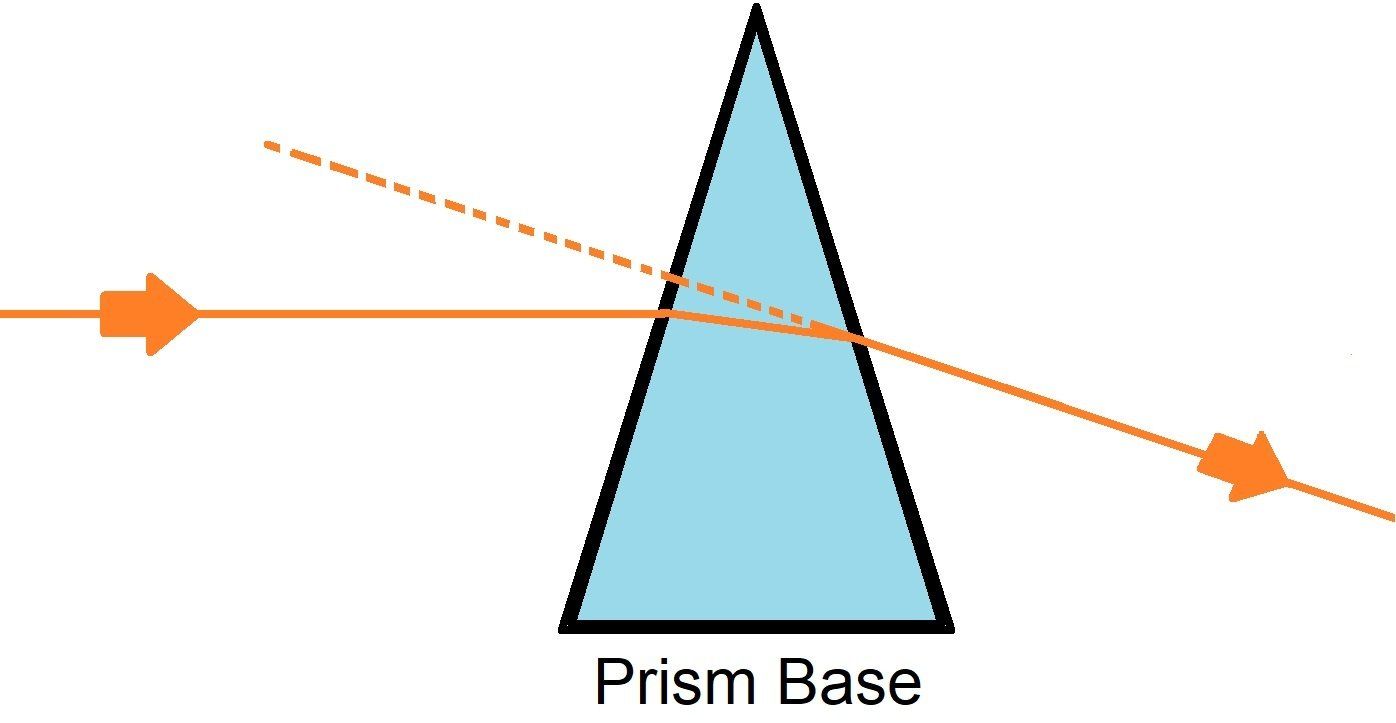Myopia (near-sightedness)
Myopia or near-sightedness is where the power or refractive strength of the eye is too strong for its length. This means that light from a far distance will focus in front of the retina. Because of this a myopic person sees objects at a near distance better than they do at a far distance. For mild amounts of myopia this means that objects within arms length are in good focus, however, for high amounts of myopia only objects within inches of the eye can be seen clearly.
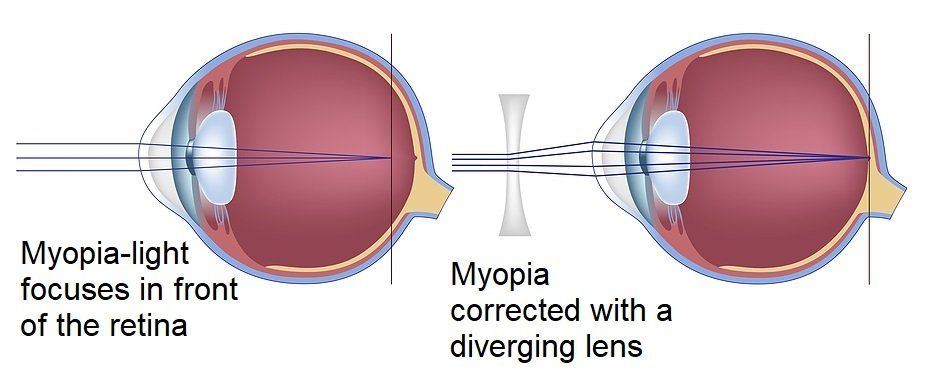

Hyperopia or far-sightedness is where the power or refractive strength of the eye is too weak for its length. This means that light from a far distance will focus behind the retina. Because of this it is easier to see at a far distance than at a near distance. Mild amounts of hyperopia at a young age can easily be overcome by the strong focal ability of the crystalline lens inside the eye. However, at an older age mild amounts of hyperopia cannot be overcome by the weak focal ability of the crystalline lens and this makes visual acuity blurry far away and even worse at near. High amounts of hyperopia at a young age may cause significant visual strain, headaches, avoidance of near work or an eye turn. At an older age high amounts of hyperopia cause very blurry distant visual acuity and extremely blurry near visual acuity.
To correct for hyperopia a plus lens is placed in front of the eye to converge light so that it enters the eye correctly to focus closer forward on the retina. Contact lenses do the same, but they are placed on the eye itself. LASIK removes tissue on the cornea to steepen its shape and moves the focal point further forward to focus properly on the retina.

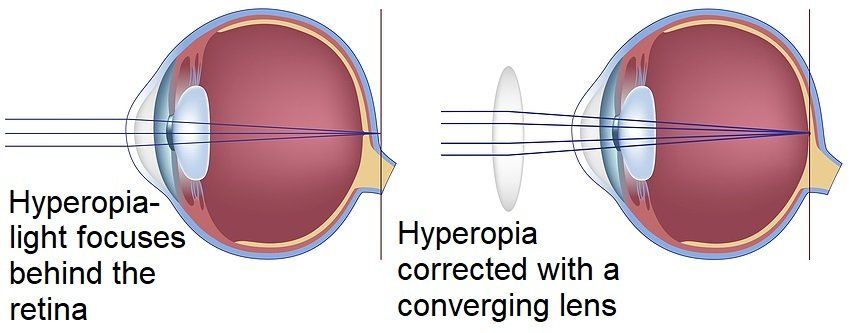
Astigmatism is where the eye is shaped like a football, rather than a basketball. The eye has a short curvature in one axis and a longer one in the other. This causes light to focus in two different meridians that are perpendicular to each other. Astigmatism can cause blurry vision at far and near distances. It commonly causes eye strain, headaches, shadowing and glare.

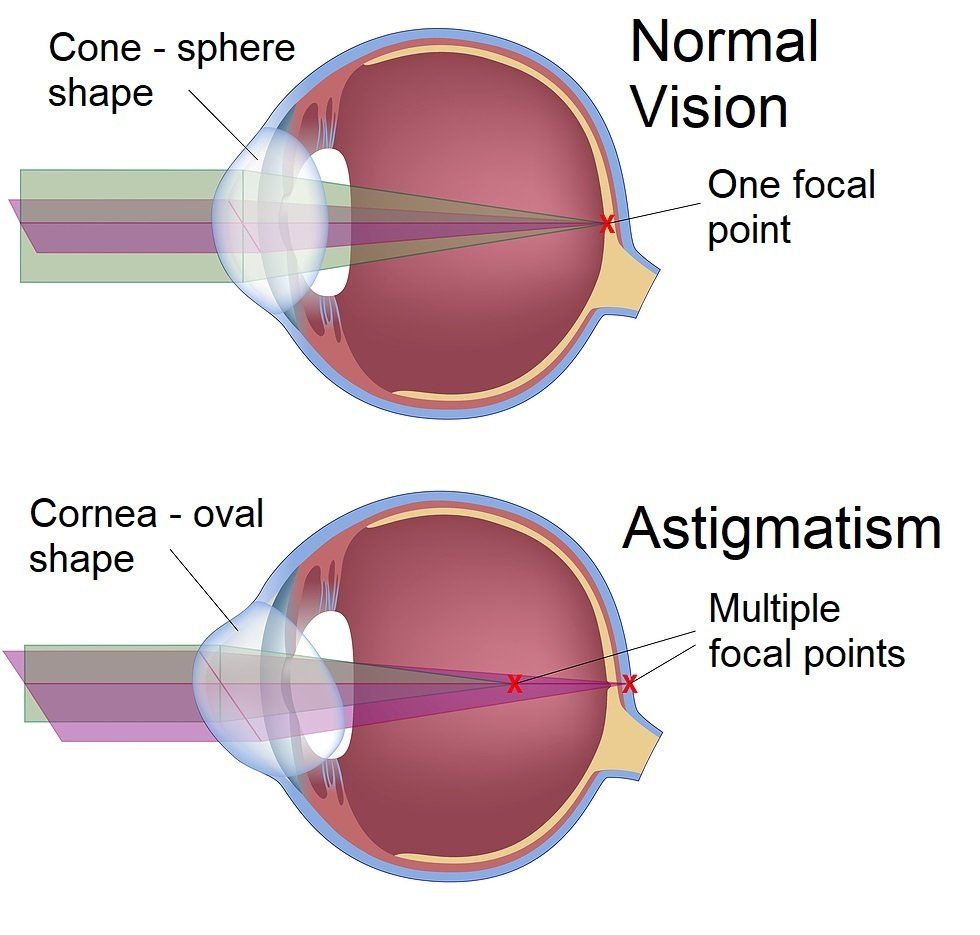

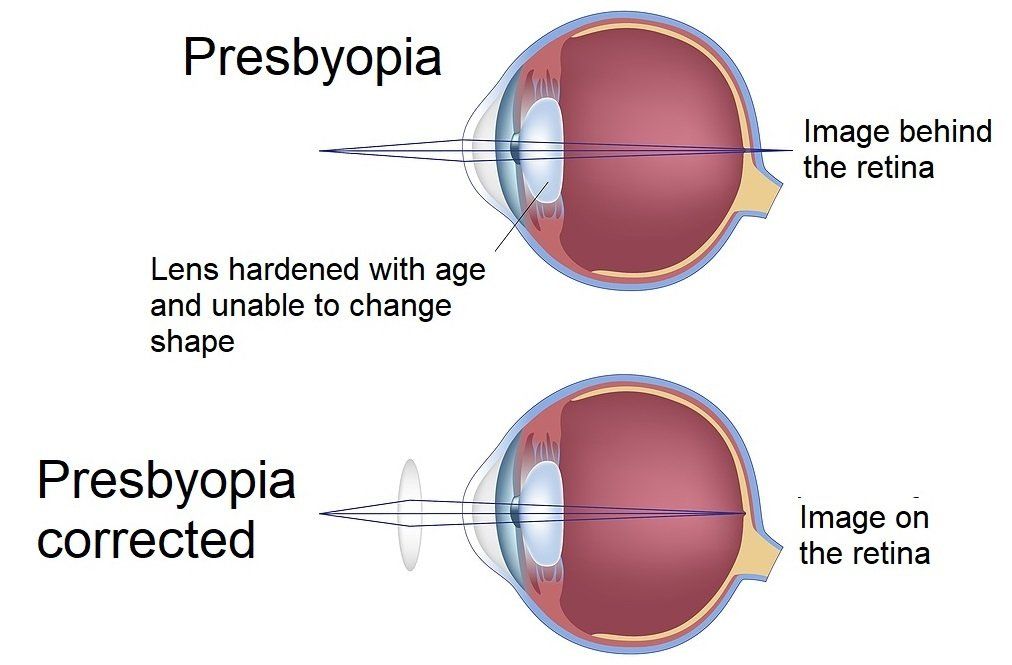
Double Vision
Double vision or diplopia is seeing two images. It can occur with one eye open or with both open. It can be very disorienting. When it occurs with one eye open, it is because of a media opacity like a cataract. To resolve this type of double vision the media opacity needs to be removed or corrected. When diplopia happens with both eyes, it is because of a misalignment between the two eyes involving the extraocular muscles or the nerves that innervate them. When double vision is a new concern, it should be thoroughly investigated for signs of disease. With both eyes the underlying cause should be resolved, if possible. Other options include surgery on the extraocular muscles or using prisms in a glasses prescription. The prism compensates for the misalignment and optically places the images together so the brain can fuse them.

